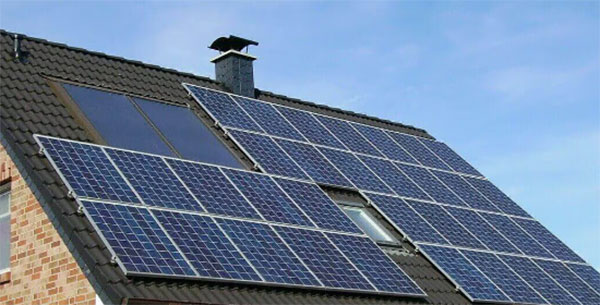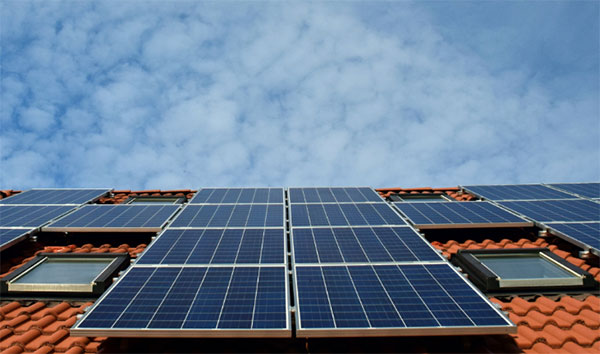Description
Usually not,but you need assess your roof's condition, age, and durability; replace if it nears its lifespan end or shows significant wear for optimal solar efficiency.
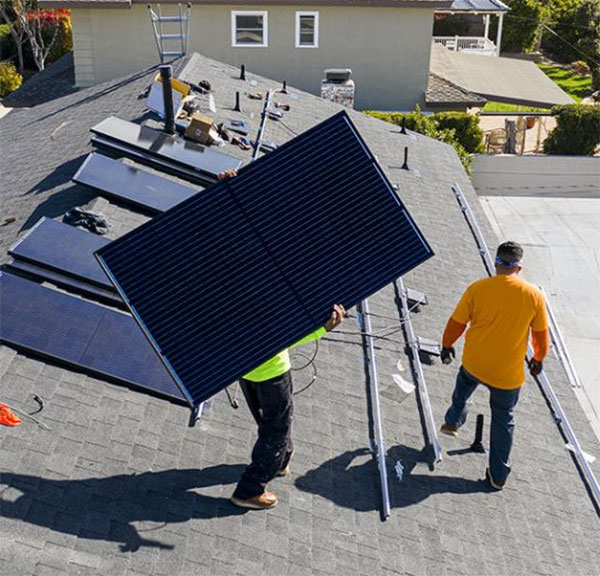
Evaluating Roof Condition and Suitability for Solar Panels
Assessing Roof Age and Material Durability
The age of a roof is a critical factor in determining its suitability for solar panel installation. Roofs older than 20 years may require replacement or significant repairs before installation. The durability of roofing materials varies; for instance, slate and tile roofs can last over 50 years, while asphalt shingles typically last 15-30 years. It's essential to evaluate the remaining lifespan of the roof against the expected 25-30 year lifespan of solar panels.
The mismatch in longevity can lead to additional costs, as replacing the roof after panels are installed is more complex and expensive.
Importance of Structural Integrity for Solar Panel Installation
Structural integrity is paramount for safely installing solar panels. A roof must be able to support the additional weight of the panels, which can be around 15-25 kilograms per square meter. A structural assessment by a qualified engineer can determine if reinforcement is needed, which can add to the cost.
Roofs with significant sagging, rot, or damage are poor candidates for solar installation without prior repair or reinforcement.
Identifying Potential Roof Repair Needs
Before installation, it’s crucial to identify any repair needs. Common issues include broken or missing tiles, leaks, or inadequate insulation. Repairing these issues before installation is typically more cost-effective and can enhance the overall efficiency of the solar panels. For example, proper insulation can reduce energy loss, directly impacting the effectiveness of the solar power system. The cost of repairs varies but can range from a few hundred to several thousand pounds, depending on the severity of the issues.

Understanding Solar Panel Installation Requirements
Solar panel installation involves several critical factors that directly influence their efficiency and effectiveness. Understanding these requirements is key to maximizing the benefits of solar energy in your home.
Roof Angle and Orientation for Optimal Solar Efficiency
The angle and orientation of your roof are crucial for optimal solar panel performance. In the UK, the ideal roof orientation is south-facing, with an angle of 30 to 40 degrees. This positioning maximizes exposure to sunlight, potentially increasing the efficiency of the solar panels. A deviation from the ideal angle or orientation can result in a 10-25% decrease in solar panel efficiency.
For roofs that are not ideally oriented or angled, adjustable mounting systems can be used. However, these systems can add approximately 15-25% to the overall cost of installation. It's also important to note that while east or west-facing roofs may produce less energy, they can still be viable options, especially with the advancements in solar panel technology.
Space and Layout Considerations on the Roof
Sufficient space on the roof is necessary for the installation of solar panels. The size of the solar system required depends on your energy needs. An average UK home may require a 3-4 kW system, which typically covers an area of 15-20 square meters. It's crucial to ensure that the roof can accommodate this space without obstructions.
The layout of the solar panels also impacts their efficiency. Panels should be placed in a way that avoids shading from chimneys, trees, or other structures. A poorly laid out solar panel system can suffer from a 20-35% drop in energy production.
Impact of Shading and Environmental Factors
Shading and environmental factors significantly impact solar panel performance.
Even partial shading can lead to a substantial decrease in energy output. Trees, nearby buildings, and even bird droppings can cause shading issues. A reduction in efficiency of up to 50% is possible if the panels are significantly shaded.
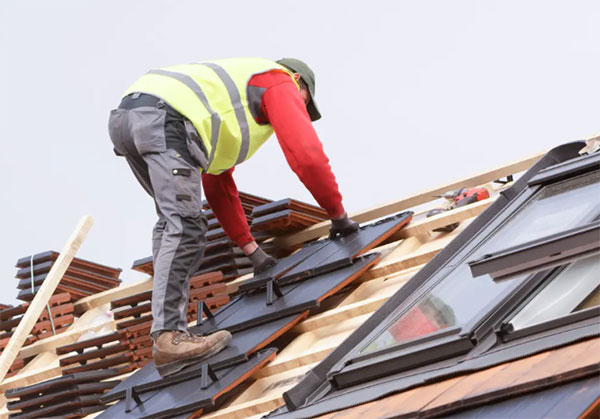
Roof Replacement Considerations
When considering installing solar panels, it's essential to evaluate whether your roof needs replacement or repair. This decision can significantly impact the cost, performance, and lifespan of your solar panel system.
Analyzing Cost-Benefit of Roof Replacement vs. Repair
- Cost of Roof Replacement: The cost can vary widely, from £4,000 to £12,000, depending on the size of the roof and the materials used.
- Cost of Repair: Minor repairs might cost a few hundred pounds, whereas extensive repairs could run into thousands.
- Longevity: A new roof can last 20-50 years, whereas repairs might extend the life of your existing roof by 5-10 years.
- Solar Panel Lifespan: Typically, solar panels last about 25-30 years. Matching the roof's lifespan with the panels can be more cost-effective in the long run.
- Energy Efficiency: A new roof can improve insulation, potentially enhancing the overall energy efficiency of your home.
Deciding between replacement and repair involves weighing the immediate costs against long-term benefits and potential future savings.
Roofing Materials Compatible with Solar Panels
- Tile Roofs: Widely used in the UK, they are durable and can support the weight of solar panels. However, some older tile roofs might need reinforcement.
- Metal Roofs: Ideal for solar panels, they are durable and have a long lifespan.
- Flat Roofs: Require specific mounting systems but can be suitable for solar panels.
- Asphalt Shingles: The most common in the UK, they are compatible with solar panels, but their lifespan is shorter than other materials.
Choosing the right roofing material is crucial for the
long-term durability and efficiency of solar panels.
Weather Conditions and Their Impact on Roofing Choices
- Rain and Moisture: In the UK's wet climate, it’s vital to choose materials that resist moisture and prevent leaks.
- Wind Resistance: Certain materials like metal or heavier tiles offer better resistance against strong winds.
- Sun Exposure: Prolonged exposure to sunlight can degrade certain materials faster. Metal roofs, for example, withstand this better than asphalt.
- Snow Load: Roofs must be able to withstand the weight of snow, which is particularly important in areas with heavy snowfall.
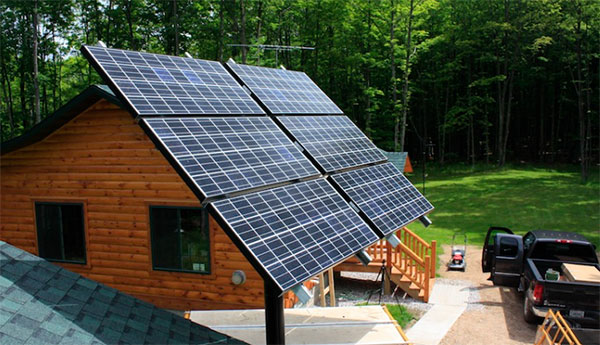
Planning and Preparing for Solar Panel Installation
Proper planning and preparation are crucial for a successful solar panel installation. This includes coordination between professionals, understanding the timeline, and ensuring compliance with building regulations.
Coordination Between Roofing and Solar Installation Professionals
- Selecting Qualified Professionals: Choose contractors experienced in both roofing and solar installations to ensure expertise in both fields.
- Communication: Ensure open and frequent communication between the roofing and solar installation teams. This collaboration is vital for a smooth project flow.
- Project Management: Consider hiring a project manager to oversee the coordination, ensuring both installations are harmonized and efficient.
Effective coordination can significantly reduce the risk of installation errors and ensure that both the roof and solar panels are installed optimally.
Timeline and Process of Roof Replacement and Solar Panel Installation
- Assessment and Planning Phase: This initial phase, involving inspections and designing the system, can take 1-4 weeks.
- Roof Replacement: Depending on the size and complexity, this can take 1-2 weeks.
- Solar Panel Installation: Typically, solar panel installation takes 1-3 days, but this can vary based on system size and complexity.
- Inspection and Connection: Post-installation inspections and grid connection might add an additional week.
Planning the timeline carefully ensures minimal disruption and allows for addressing any unforeseen issues promptly.
Permitting and Compliance with Building Regulations
- Building Permits: Most solar panel installations in the UK require a building permit. The application process can take several weeks.
- Compliance with Building Regulations: Ensure the installation complies with UK building regulations, particularly Part P (electrical safety) and Part A (structural safety).
- Local Council Requirements: Some local councils have specific requirements or restrictions, especially in conservation areas or for listed buildings.

Maximizing Solar Panel Efficiency and Longevity
To get the most out of solar panels, it's essential to focus on proper installation, regular maintenance, and performance monitoring. These steps not only enhance efficiency but also extend the lifespan of the solar system.
Ensuring Proper Roof Alignment for Solar Panel Placement
- Optimal Orientation: In the UK, a south-facing roof is ideal for maximum sunlight exposure. This orientation can significantly increase solar energy generation.
- Correct Angle: The optimal tilt angle for solar panels in the UK is typically between 30 to 40 degrees. This angle maximizes sunlight absorption throughout the year.
- Shading Considerations: Minimize shading from trees, chimneys, or nearby buildings, as even partial shading can reduce solar panel efficiency by 25-50%.
Proper roof alignment and positioning are crucial for maximizing solar panel output and efficiency.
Maintenance Tips for Roof and Solar Panels
Regular Cleaning: Dust, leaves, and bird droppings can reduce panel efficiency. Cleaning them every 6-12 months can maintain optimal performance.
Inspection for Damage: Regularly inspect for any physical damage to the panels or roof, particularly after extreme weather events.
Ensuring Ventilation: Good air circulation around the panels is necessary to prevent overheating, which can reduce efficiency and lifespan.
Regular maintenance is key to sustaining the efficiency and longevity of both the roof and solar panels.
Monitoring and Optimizing Solar Panel Performance
Performance Monitoring Systems: Installing monitoring systems helps track energy production and identify any performance issues.
Energy Usage Analysis: Regularly review how much energy is generated versus consumed. This analysis can help in optimizing energy usage patterns.
Professional Check-ups: Annual check-ups by a professional can ensure the system operates at peak efficiency and can help in identifying potential issues early.







